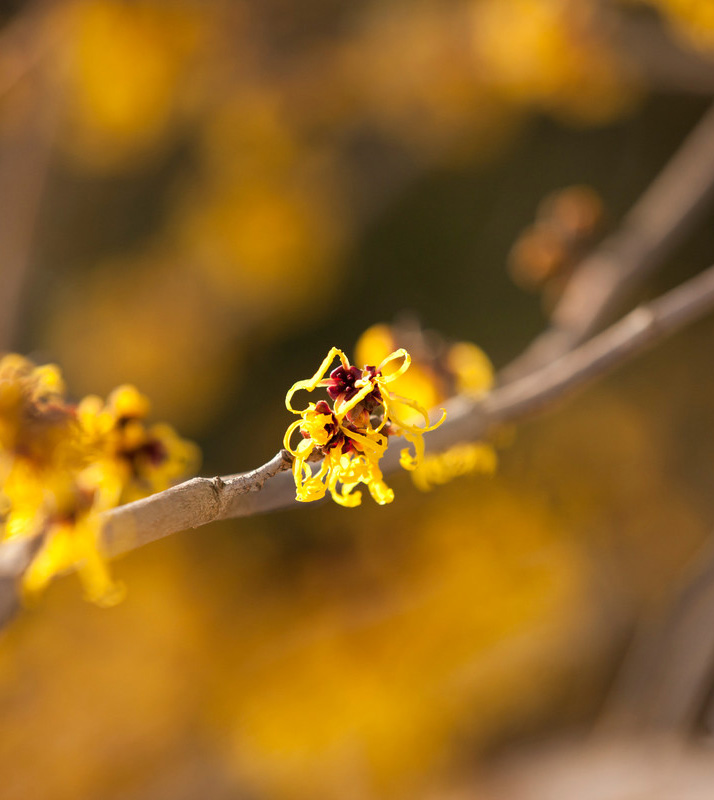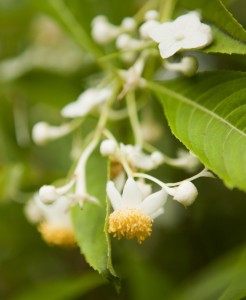At Home in the Snow
Posted in Around the Garden on March 24 2015, by Deanna Curtis
Deanna F. Curtis is Curator of Woody Plants at The New York Botanical Garden where she develops, documents, and helps manage the historic hardy tree and shrub collections.

Friday may have been the first day of spring, but as I watched the snow cover the plants, it certainly felt like winter. I know that everyone is anxiously waiting for spring to arrive, but there is something quite perfect about witch-hazel blooms dusted with snow that demands appreciation. The Azalea Garden is full of these bright spidery flowers right now. They are not some anomaly attributed to our changing weather patterns. This is their time. When it is still gray and the threat of snow still looms large, you can count on their light and warmth in the garden.
Witch-hazels have a range of flowering times depending on species and cultivar. The American witch-hazel, Hamamelis virginiana, flowers in autumn. Vernal witch-hazel or Ozark witch-hazel, Hamamelis vernalis, is also native to North American and often blooms in winter months despite its name. However, this species typically has small flowers and a strong tendency to hold on to its leaves all winter long, obscuring its fragrant flowers. Look for cultivars that were selected for their early leaf drop. The Chinese witch-hazel, Hamamelis mollis, and the Japanese witch-hazel, Hamamelis japonica, flower in late winter. These species are prized for their large and fragrant flowers, as well as their perfect timing – just when we need them the most! The majority of selections available today are cultivars of the hybrid between these two Asian species, Hamamelis × intermedia.

